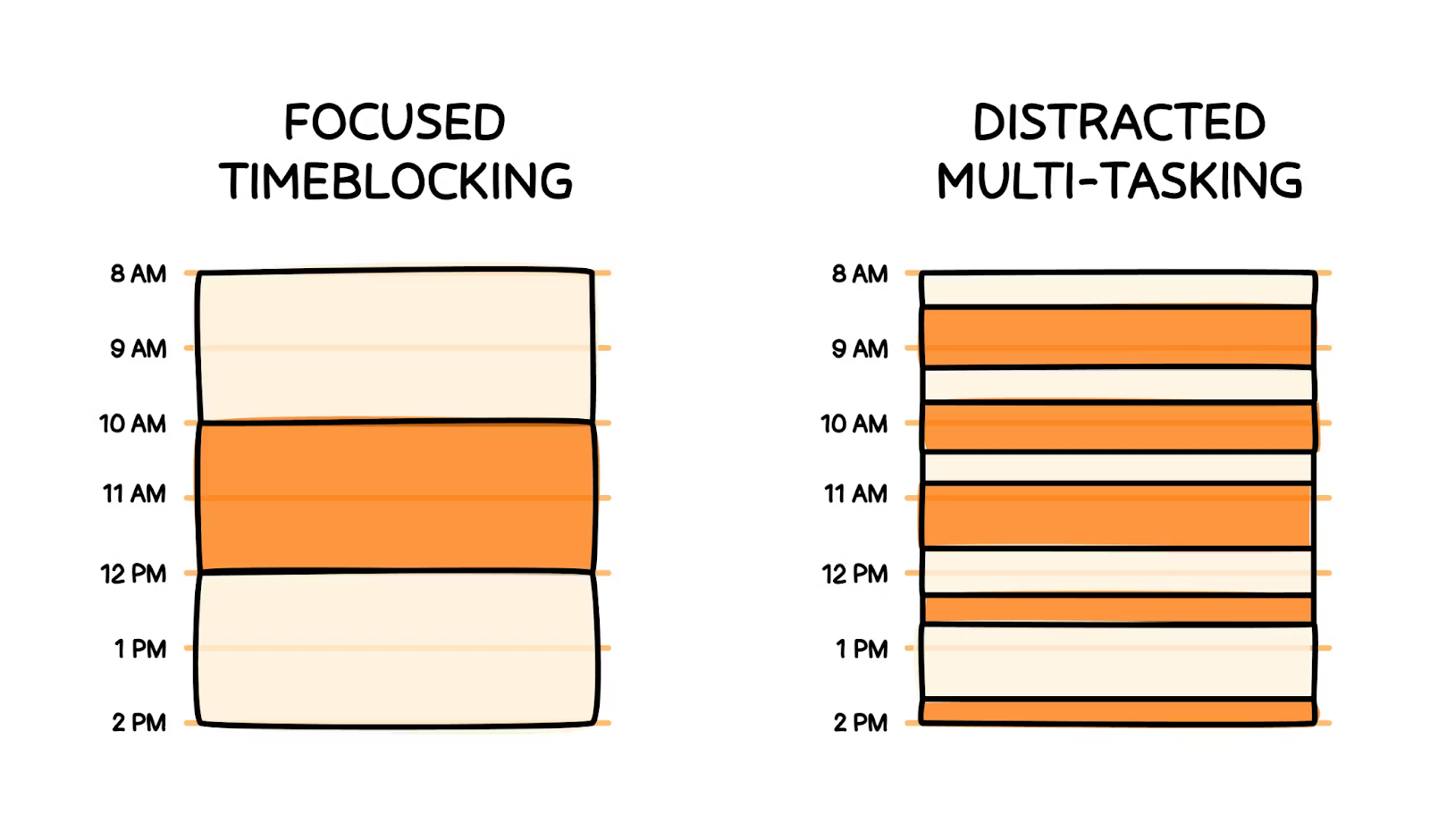What if I told you “balance” is a myth?
Yes, intense kickoff, but I promise this is going to be crucial. So much of the language used in passing to discuss the mixture of fatherhood and professional life revolves around this concept of balance- a perfect split of 50% work and 50% home. While an ideal situation, what happens when this goal becomes counterproductive?
When we exert so much of our energy into achieving this 50/50 lifestyle, it can feel incredibly disheartening when our efforts seem to fall short. Life and work are two forces that function in tandem with unpredictability, especially as a working father when your attention and meaningful presence are sought after in several contexts. Inevitably, there will be times when personal life needs the majority of your attention and vice versa. Acknowledging this idea allows us to flip the focus from trying to maintain a perfect split schedule and instead preserving energy to make room for more intentional, productive, or fulfilling activities.
From a classic case of computer screen fatigue to a hefty lineup of meetings, the everyday office schedule is filled to the brim with mental energy-usage. Knowing when and how to budget out (and recharge) your personal battery will help to prevent burnout both in the office and at home. Below you will find a menu of tools to test-out in a typical workday. From fine tuning a personal schedule to designating an at-home outfit (complete with sweatpants and your favorite t-shirt), finding small ways to sprinkle in energy-saving and energy-providing activities can help you reclaim your week.

At Work
Adopt Time Blocking:
It’s no secret that the workday is a highly unpredictable ordeal. From being pulled into last-minute meetings to getting stopped by a colleague on the journey back to your desk, it can feel nearly impossible to stick to a specific schedule throughout the day.
While it might not be entirely feasible to prepare for the unknowns of the classic 9-5, blocking out specific time intervals for the predictables of the day can change the game when it comes to checking tasks off your list. Keep your time blocks reasonable, goal-specific, and relatively flexible to save room for those unforeseen pop-ups.
Check out the example below to model your own version:
- 9 a.m. – 11 a.m: Strategic Planning
- 11 a.m. – 12 p.m: Answer Emails
- 2 p.m. – 4 p.m: Team Meetings
Touch base with yourself at the end of the week. What worked well and what could use a little workshopping for the next go-around? These slight tweaks can help you to maximize your most efficient work style and prioritize your to-dos based on your strengths.
Task Tackling:
Stick with me while we go on a Bill Nye-style adventure for a moment. Imagine your body as a smartphone and think of your brain as the battery charge icon in the corner of the screen fueling the rest of the apps. These apps might range from workplace necessities like focus or communication to more task-oriented options, like creativity and critical thinking.
Let’s determine that 9 a.m. -2 p.m. on this specific workday was used to respond to emails and conduct team meetings. Using your body’s brain power with every task you complete, it is now 2 p.m. and your percentage is down to 20% , sending your body into “Low Power Mode.” To preserve enough energy to make it through the day, your brain shuts down high energy-using apps like creativity or innovation and runs on the basic necessities to function with your remaining percentage.
Not only is this process draining, but the race against brain battery can prove to be highly discouraging when you find yourself starting demanding tasks at your lowest percentage. It is crucial to learn your work pattern to curate the most efficient time block schedule for your workday.
With Core Energy Coaching, you will receive personalized strategies that break down your most productive times, tasks that come easiest to you, and the style of work that best suits your skills, strengths, and habits. Using this information will inform your time blocking schedule and ensure enough battery percentage is allotted to some of the more energy-eating tasks of the day.
Recharging in a Chargeless Environment:
Finding time to recharge your battery in a workplace atmosphere is easier said than done. When the labor of the day inevitably takes over, especially when serving as the reference point for several members of a team, making room for revitalizing moments can feel like a distant dream.
However, carving out blocks in your schedule to make small moments for “you” can provide a little extra charge to prevent the end-of-the-day slump. Taking on a system inspired by the Pomodoro Method– a time management process that cycles through 25 minutes of focused work time immediately followed by a 5 minute break- try to schedule out quick, intentional breaks during your work day to counteract energy-using tasks.
While it might not be entirely possible in your workplace to adopt the 25-5 method, staying consistent in scheduling a 5-minute walk or listening to a favorite podcast for a few minutes could be the difference between an energized work day and a drained brain.
At Home
Monday Night Meeting:
When your office team members are working on separate projects, it is almost required to conduct some sort of weekly team meeting to touch base with the status of each endeavor and ensure the entirety of the team is cued into the progress. This same principle can apply to the family unit.

With each family member running on a fluctuating schedule- differing after-school activities, pending exams, and upcoming games- the work week for all in the family can feel rushed and ever changing.
Incorporating a “family meeting” into the week’s activities is not only an effective way to plan and stay on top of each member’s upcoming ordeals, but it is inherently a practical way to create a tech-free, conversational activity for the family. During these meetings, plans for a fun group outing over the weekend- i.e. a hike, picnic, board game night- might make it on paper. Additionally, when the family is cued into the stressors of the week for each member to some extent, whether that be a math test, a high-importance meeting, or an upcoming game, it can create a better sense of mindfulness and awareness within the home. Additionally, it fuels inclusion between kids and parents. While you might not want to share everything that is on your plate, picking one or two items that could make it on the calendar (even if it is as simple as your weekly team meetings in the office) can help kids feel like they are involved at a greater level and that their awareness matters.
Make it Fun: When conducting a family meeting with younger children, the idea of props is exciting, intentional, and real. Bring home notebooks with your company’s logo on them, use highlighters- dare I recommend the star highlighters with five color options- and have a main family calendar ready to write down the key events for the week. Using small items to create a realistic meeting setting for younger kids, they will feel like they are involved in the important, executive meeting that is family planning.
Handle Your Transitions:
The workplace can be stressful, draining, and, at times, frustrating. When going straight from this atmosphere to the home setting without any mental cues that the environment is changing, your brain stays in the stressed, drained, and frustrated mentality. This makes it pretty easy to unintentionally bring home the stressors of the day.
Create a transition routine for yourself that tells your brain it’s time to go home. Mix + match different combinations for yourself until you find what works for your brain, family, and schedule.
This might look like:
- Listening to an episode of a favorite podcast on your commute home. Or, search for topics or hosts you might like to listen to with the intention of deeming this podcast your “driving home” listen. Everytime your brain hears this show, it will correlate going home with positivity, relief, and decompression.
- Going on a brief walk around the block right when you get home. Taking a second to walk off any negative or stressed energy before entering the house can help reset your brain with that same transitional intention.
- As simple as it may seem, a change of clothes does wonders for the brain. The physicality of changing from a work outfit to a more home-worthy ensemble can signal to your brain that the workday is over and you are now in a comfier, more relaxed setting.
Boundary Setting
24/7 incoming emails, texts regarding projects, and the coexistence of personal + work life on our devices makes fully shutting off the office brain a constant challenge. Setting clear, communicated boundaries with your team is a solid way to separate these two lives. However, managers and professionals often find that their boundaries- the hours they will be fully logged off, when they will respond to messages the next day, etc- are never fully relayed to their team. This can lead to a guilt-driven cycle of feeling the need to respond to work-related messages even during at-home hours.
Of course, there will be times when work needs to make its way into the home. Incomplete projects or the desire to get ahead of tomorrow’s load can lead to some form of “homework.” So, it is important to have boundaries with yourself, as well. Set an amount of time that you will designate to family activities. Ensuring that you are setting aside personal time during key hours can help energize and provide a much-needed break from work life. Similarly, attempt to set a time limit for yourself to complete the tasks brought home from the office. Feeling well-rested can be just as important as finishing the task.
Check-out out the list below to evaluate your boundaries!
- Have I communicated my set work times with both my team and my family? (If I asked a team member if they knew my work time boundary, would they?)
- Do I encourage respecting boundaries and work life balance for the rest of my team?
- What are my specific times of switching from work to home and vice versa?
- Am I delegating tasks effectively to prevent work from spilling over into personal time?
Wrapping Up
Preserving the mental stamina to make room for energized and innovation-driven workdays while still maintaining that same momentum for at-home activities is a craft. But it is possible.
Personal battery saving will look different for every person. Whether you are someone who thrives on a well-kept calendar or you are an individual who prefers high variety to sustain motivation, not every tactic will be one-size-fits-all. Try out multiple options and see what works for you. Additionally, note what might need some tweaking to better fit your schedule, and be kind to yourself in the process.
Not quite finding success with the above options? Download our Energy Checklist here that outlines additional energy-savers to incorporate into your everyday routine!

